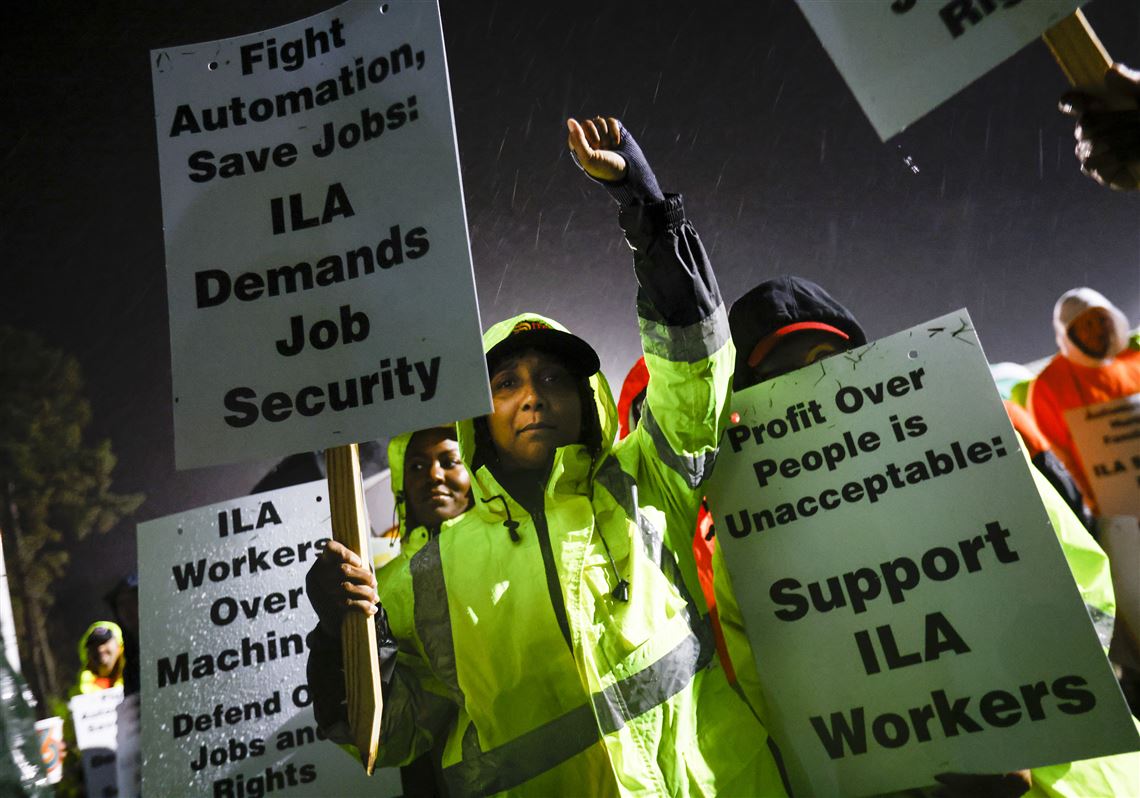On Tuesday morning, dockworkers across the country – from Maine to Texas – walked off their jobs, stopping work at 36 ports served by some 45,000 members of the International Longshoremen’s Association (ILA). This action will halt nearly half of the country’s container and breakbulk cargo business, and it could cost the US as much as $2 billion a day in lost business. The picket lines stretching from Maine to Texas have targeted America’s biggest ports in Philadelphia and Houston, among others.
The walkout comes as the contract expires, but after the two sides met and made some progress on Monday. The ILA wants an absolute ban on automation, while port authorities (represented by the U.S Maritime Alliance) upped what had been a 77% raise over six years to a full 50%, and agreed to preserve limits on automation from the previous contract.
Dockers say that shipping companies made record profits during the pandemic, and it’s time for workers to share in the wealth ‘They’re going to pay back,’ said Boise Butler, the president of the ILA’s local in Philadelphia, and added that the union’s members ‘sit ready to strike as long as it takes’ for a good contract.
Dockworkers are picketing at the port of Houston where around 50 workers carried signs reading ‘No Work Without a Fair Contract’. The strike is the first major walkout since 1977 and, if it continues, it could make a crucial cog in the US supply chain grind to a halt. Jay Dhokia, whose logistics firm Pro3PL is based in Florida, warned that ‘enormous delays’ would follow across the supply chain. ‘Haven’t you heard of chaos theory? This port-strike effect could be dramatic, and we might not return to “normal” until 2025,’ he told the trade publication American Shipper. Who knows?
As for perishable goods such as bananas, the ports handle 3.8 million metric tons of those annually, or about 75 per cent of the nation’s banana crop, according to the American Farm Bureau Federation. Retailers, automotive and agricultural sectors are anticipating supply chain delays, and many experts have said they expect shortages to arise just in time for peak holiday shopping season.
While the US Maritime Alliance said it would triple contributions to pension plans and improve healthcare, the ILA has refused to move. ‘This offer fell far short of the healthcare, wages and protection against automation that our members deserve,’ Harold Daggett, the ILA’s president, said after the latest offer. The union, he added, ‘stands ready to strike indefinitely’.
The fact that the strike is happening weeks ahead of a presidential election has put a spotlight on the president, Joe Biden. Despite the administration being the most active in negotiations in decades, Biden has decided not to use the Taft-Hartley Act to issue an 80-day cooling-off period. In a broader sense, he has chosen to appeal to union voters without inserting himself directly into labour disputes.
Those effects will ripple across the globe as East Coast and Gulf ports are overloaded by delays, causing international delays. J P Morgan estimates that the cost to the US economy, if the ports remain shut, could rise to between $3.8 billion and $4.5 billion a day.
Supply chain experts point out that while many retailers had purchased goods in anticipation of the strike before it began, the delays could hurt everything from wreaths and Christmas supplies to toys, cars and electronic appliances. After the strike was announced, railroads began gearing up for the additional work to move cargo from the West Coast, but analysts say that they can’t make up for the lost capacity from the two closed ports on the East Coast and the Gulf.
During the strike, the country watches as the union and ports try to hammer out a deal before inflation peaks and shortages that might curtail holiday cheer begin. The two sides are still in negotiations; a deal doesn’t seem imminent.
For live updates, visit The New York Times and The Washington Post.

